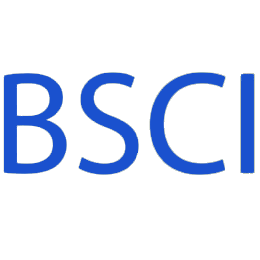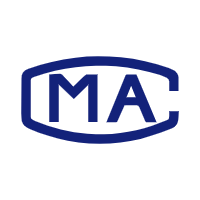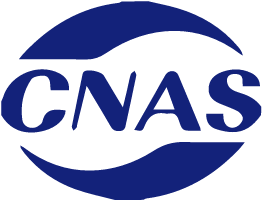
basic introduction
ZRLK's professional testing team can provide you with multi-faceted paint testing services, help you to avoid the loss caused by the wrong material selection, and provide clear directions and suggestions for material improvement. At the same time, it can also be used to monitor the quality of factory production.
Service background
The material coated on the surface of the object can bond well with the base material and form a complete and tough protective film, which we call the paint. In fact, paint and paint are the same concept, and paint is a long-used customary name. After the introduction of our country, we will use it as an industry term. At present, the entire architectural coatings market continues to grow and the entire industry is undergoing continuous upgrades. It has become a trend to produce high-value-added products with better quality and stricter environmental protection standards. Environmental protection and health are the biggest concerns of coatings. point.
ZRLK's professional testing team can provide you with multi-faceted paint testing services, help you to avoid the loss caused by the wrong material selection, and provide clear directions and suggestions for material improvement. At the same time, it can also be used to monitor the quality of factory production.
Service Content
Test items
Harmful substance content, low temperature flexibility, water impermeability, tensile test, low temperature flexure, heating expansion rate, surface drying time, solid drying time, solid content
standard test
GB 23445-2009, GB 16777-2008, JC/T 864-2008, JC/T 2090-2011, GB 18581, GB 18582
Applicable Products
Building materials, coatings
Test content
Harmful substance content
1. Test principle: determine the content of volatile organic compounds, benzene, toluene, ethylbenzene, xylene, TDI, HDI, methanol, halogenated hydrocarbons, heavy metals and other harmful substances in paint or coated products.
2. Test standard: GB 18581, GB 18582, GB 23445-2009 (Section 5)
Low temperature flexibility
1. Test principle: The sample is bent after a low temperature treatment for a period of time, and whether the sample is broken from a certain angle.
2. Test standard: GB 16777-2008 (Section 13.2), C/T 864-2008 (Section 5.4.4)
Impermeable
1. Test principle: put the sample in a specific device and apply a specific pressure at a certain time to see if the sample leaks.
2. Test standards: GB 23445-2009 (Section 6.2), GB 16777-2008 (Section 15), JC/T 864-2008 (Section 5.4.5), JC/T 2090-2011 (Section 7.6)
Low temperature bendability
1. Test principle: After a period of treatment, the sample is bent 90 degrees at a specific temperature to watch the appearance of the sample.
2. Test standards: GB 23445-2009 (Section 6.2), GB 16777-2008 (Section 14.2), JC/T 2090-2011 (Section 7.7.2)
Tensile test
1. Test principle: Tensile the specimen until it breaks, and measure its tensile strength.
2. Test standards: GB 23445-2009 (Section 6.2), GB 16777-2008 (Section 9.2), JC/T 864-2008 (Section 5.4.3)
Heating expansion rate
1. Test principle: heat the sample and measure the rate of change of dimensions before and after heating.
2. Test standard: GB 16777-2008 (Section 12), JC/T 864-2008 (Section 5.5.8)
Dry time
1. Test principle: apply the coating to the aluminum plate, and record the time when the coating is not adhered with the finger.
2. Test standards: GB 16777-2008 (Section 16.2.1), JC/T 864-2008 (Section 5.7.1), JC/T 2090-2011 (Section 7.4)
Working time
1. Test principle: apply the coating to the aluminum plate, and record the time when the coating is cut with a knife, and there is no finger sticking in the bottom layer and the film.
2. Test standards: GB 16777-2008 (Section 16.2.2), JC/T 864-2008 (Section 5.7.2), JC/T 2090-2011 (Section 7.4)
Solid content
1. Test principle: After heating the material, certain substances will be volatilized, and the rest is solid content.
2. Test standard: GB 23445-2009 (Section 6.2), GB 16777-2008 (Section 5), JC/T 864-2008 (Section 5.4.6)
Our advantage
1. With a professional qualification and experienced expert technical team, we can provide you with professional consultation and services.
2. Have advanced laboratory equipment to ensure the accuracy and reliability of test data.
3. As a third-party testing and certification organization trusted by customers worldwide, we are your certificate of quality.


BSCI certification is an abbreviation of BusinessSocialComplianceInitiative, and Chinese is called business social standard certification. BSCI is an organization that advocates the business community to abide by social responsibility. At the same time, it is a non-profit organization.

CMA, the name is \"China Metrology Accreditation\", the abbreviation of \"China Metrology Accreditation\" in English. According to the provisions of Article 22 of the Metrology Law of the People’s Republic of China: “The product quality inspection agency that provides notarized data to the society must be evaluated by the metrological administrative department of the people’s government at or above the provincial level for the capability and reliability of metrological verification and testing. Qualified.\"

Laboratory accreditation is a third-party certification that CNAS has the ability to perform specific testing and calibration work for testing and calibration laboratories.
ZRLK\'s professional testing team can provide you with multi-faceted paint testing services, help you to avoid the loss caused by the wrong material selection, and provide clear directions and suggestions for material improvement. At the same time, it can also be used to monitor the quality of factory production.
Get a quote